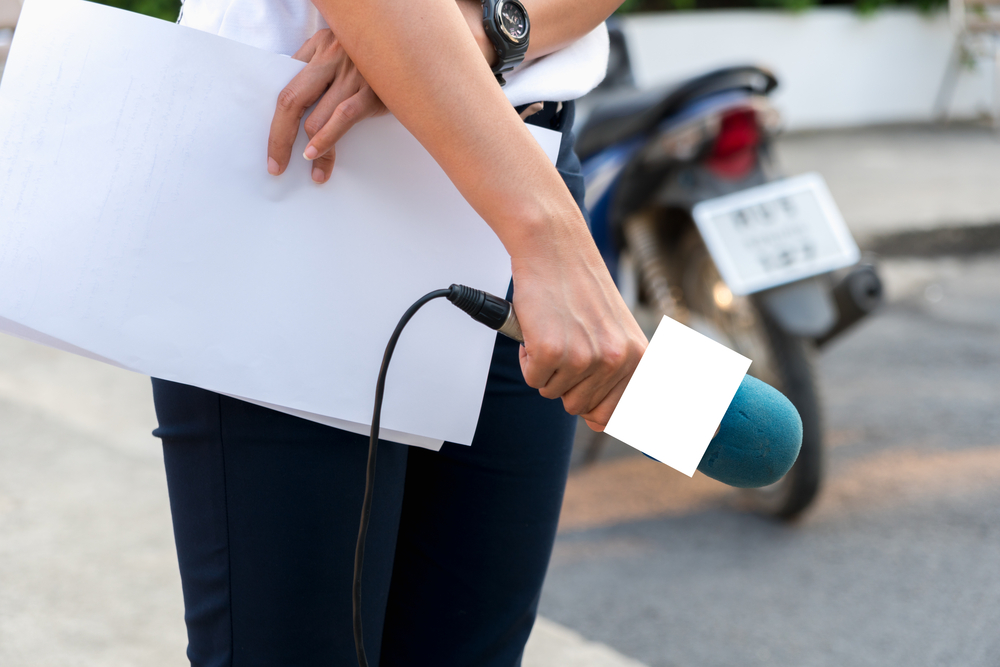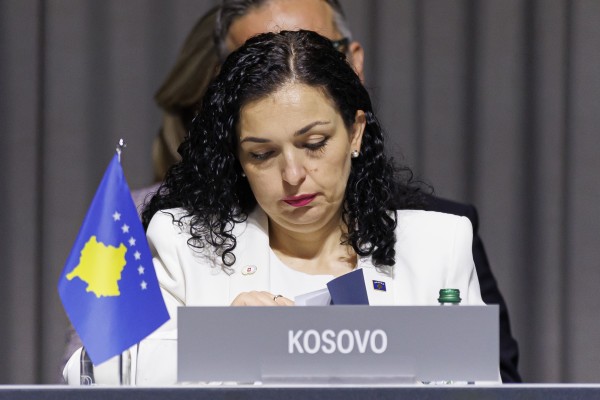“If we had lived in the Middle Ages, I would have thrown you at the stake first!” “Filthy lying whore. Find a tree and a rope.” “I hope you get properly raped once.”
These are just a few examples of the widespread threats and online abuse that women journalists in the Netherlands receive via social media due to their work.
This online abuse of women journalists in the Netherlands – a country known for its high level of press freedom – are far more commonplace than some might expect, according to a recent survey by Dutch journalist safety platform PersVeilig.
In an online survey of almost 300 female journalists working in the Netherlands conducted in September 2022, as many as 82 per cent said they had experienced some form of intimidation, aggression or threat, according to the findings.
Almost a third of those polled said they experienced gender-based threats online on a monthly basis and at least 11 per cent experienced threats more often than that.
Compared to the journalistic profession in general, female reporters and media workers are also more likely than their male colleagues to experience aggressive or intimidating comments via social media.
The survey also found that Twitter was the social media giant on which the most abuse occurred: 25 percent of all online aggression experienced by women journalists takes place on the platform, according to the survey.
Belittling and humiliating
Conditions for press freedom and independent journalism remain relatively strong in the Netherlands. Nevertheless, the majority of women journalists have to deal with some form of aggression or threat from time to time. And that number is increasing, previous surveys in 2017 and 2021 showed.
One reason for this is the increasing polarization in the Netherlands, according to the February 2022 mission report by the Media Freedom Rapid Response (MFRR), of which IPI is a partner.
One of the recommendations in this report was further investigation into the safety of female journalists in particular. The nature of aggression, intimidation and threats and the consequences is different for women than for their male colleagues.
“I find the results of the survey shocking. Both the extent to which female journalists face harassment, and the quantity,” said Peter ter Velde of PersVeilig, the Dutch organization that commissioned the study. “Moreover, the threats and intimidations online are very much directed at the person and at being a woman. These sexist, belittling and humiliating comments are what I find most difficult to read.”
A third of female journalists who faced aggression, threats or harassment experienced the latest incident as gender-based discrimination. Women have been called “whore”, “hopscotch c**t” or told to “go clean up”.
One respondent said: “You shouldn’t generalize, but I noticed it was mostly men who said I shouldn’t get involved in reporting on a certain subject.”
Effects on behaviour and job satisfaction
Female journalists in the Netherlands were also found to experience more frequent effects of aggression, intimidation and threats compared to the profession as a whole.
This is true for 77 percent of female respondents, versus 63 per cent for the entire profession – a percentage taken from previous research.
Almost half of female journalists reported negative effects on their behavior and job satisfaction. This is followed by effects on mental and physical health.
More than half of the women journalists said they choose their words more carefully following an incident, almost a quarter started avoiding certain social media and a fifth said they no longer publish on certain topics.
But despite these serious effects, far from all women say they raise these incidents in the workplace. And only three out of 10 respondents in the survey say that sufficient measures have been taken by the employer or client to protect journalists from aggression, intimidation and threats.
Role of the employer
What can you do if a colleague is harassed or threatened online?
Someone who can speak from recent experience is Wilma Haan, deputy editor-in-chief at NOS News, the public news organization in the Netherlands. In early September 2022, NOS journalist Nasrah Habiballah became the target of a Twitter storm. The trigger was the news that Habiballah will become a correspondent in Israel and the Palestinian territories.
“We did expect something, knowing Twitter, but the amount of threats and its intensity still surprised us,” says Haan. Because Haan had shared the announcement herself, she was tagged in many comments and had an instant view of what Habiballah had to deal with. “It went from ‘Jew-hater’ to very racist and sexist comments,” she says.
Things got so bad that Haan decided to intervene on Habiballah’s behalf, by posting a firm statement on her own Twitter account. “Of course after consulting Nasrah,” says Haan, “because by taking a stand you give another swing to all this.”
Indeed, Haan’s Twitter thread caused another wave of reactions. But there were also many positive ones among them, says Haan, with people expressing their support for Habiballah, for instance. Didn’t Haan herself become the next target of slurs? “A little,” she says, “but that was nothing compared to what happened to Nasrah. It was worth it.”
Twitter unreachable
A Twitter storm cannot be stopped overnight, Haan knows. “To Nasrah we said, and we do the same to others: shut yourself off from it. Don’t go checking your timeline yourself, because then it won’t let you go.”
She says that at NOS, in these situations, someone else checks what is being said online and whether there are things among them that could lead to a report to the police.
That is also what Ter Velde of PersVeilig advises. PersVeilig is a joint initiative of the Dutch Association of Journalists (NVJ), the Dutch Association of Chief Editors, the national police and the public prosecutor (Openbaar Ministerie).
The initiative aims to strengthen the position of journalists against violence and aggression on the street, on social media and against legal claims. PersVeilig has already held talks about online harassment with Google, YouTube and Facebook, but until now Twitter has been unavailable.
Ter Velde also insists: always report an incident to PersVeilig. “Of the female journalists who cooperated in the survey, only four per cent said they reported an incident to us,” he says.
The next step for Ter Velde is getting to the bottom of why that percentage is so low. “We will have a temporary staff member until summer 2023 who will identify what female journalists still need, in terms of training and reporting.”
The Dutch government is also taking steps to improve the safety of journalists in general. For instance, the Ministry of Justice recently announced plans to implement a law that will make ‘doxing’ illegal: publishing someone’s personal data online with the aim of intimidation.
This law would have applied for instance in the case of journalist Tara Lewis. She received multiple threats from Feyenoord hooligans after writing a column about the Rotterdam-based football club. Then hooligans began sharing her address on Twitter, ‘promising’ to drop by. Except for some extra surveillance, the police said they could not do anything about this.
The call for making doxing prohibited by law has been there for a long time. The new law is expected to be applied in the course of 2023.
And since mid-December, the Chamber of Commerce has been offering freelance journalists the option of shielding their address details in the trade register – something long requested by the Association of Dutch journalists NVJ.
A next step is the Kadaster, a public register of homeowners in the Netherlands, in which until now you can simply search for addresses by name. Ter Velde: “You shouldn’t make it too easy for people who target journalists.”
While recent actions by the Dutch government and PersVeilig are a step in the right direction, the survey’s findings illustrate how difficult the problem of online harassment of women journalists will be to tackle.
This article was comissioned by IPI as part of its work in the Media Freedom Rapid Response (MFRR), a Europe-wide mechanism which tracks, monitors and responds to violations of press and media freedom in EU Member States, Candidate Countries, and Ukraine. The project is co-funded by the European Commission.




